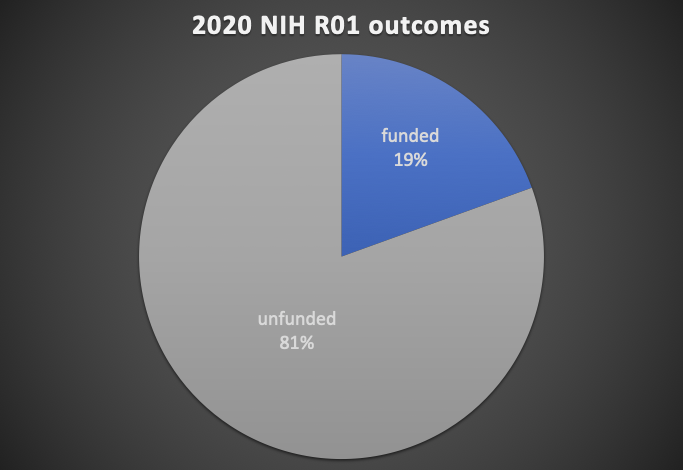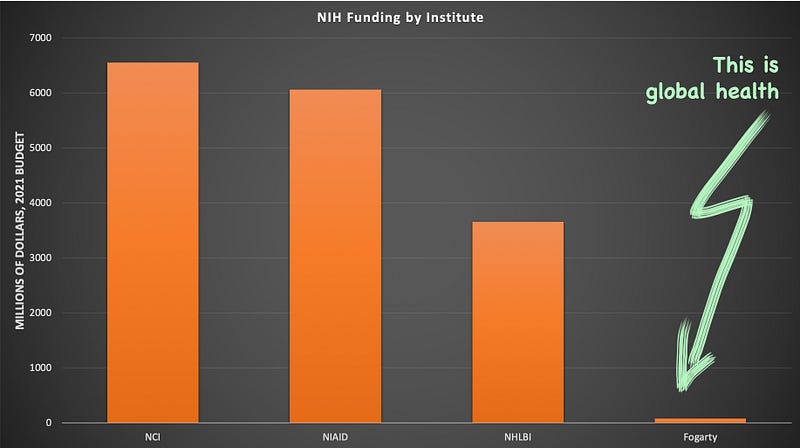The Urgent Call for a National Institute of Surgery
Written on
Chapter 1: The Challenge of Grant Rejections
Recently, I faced my forty-second rejection for a grant throughout my academic journey, bringing my success rate to a mere 10%. This means that for every ten grants I submit, nine are turned down. However, this isn't merely a tale of disappointment; rather, it serves as a lens into the academic landscape, particularly from the viewpoint of a surgeon involved in global health. Today, I want to address three pivotal questions: How concerning is a 10% success rate? Why is this problematic? And what can we do to rectify it?
Background: Understanding the NIH
While there are several significant research funding bodies both in the U.S. and globally, my focus here will be on the National Institutes of Health (NIH) for a few key reasons. First, the NIH is the largest health-related research funder in the United States. Second, its funding strategies often set trends that others follow. Third, they provide a transparent record of all applications and their funding outcomes, which I will utilize to explore my first question. Lastly, NIH funding is often considered essential for success in the academic medical field.
This is not an exaggeration. A few years ago, during my job search, my NIH grant history was frequently the first topic brought up by interviewers. Securing NIH funding is crucial for our careers.
The Importance of the R01 Grant
Navigating the myriad of NIH grant types can be overwhelming. They offer various awards, including career development (K awards), training and fellowship grants (T and F), project grants (P), formula grants (X), cooperative agreements (U), and Office of the Director grants (DP).
However, within the academic realm, the R01 grant stands out as the most critical. This particular grant is considered the gold standard among NIH offerings. The academic promotions landscape often hinges on obtaining R01s. When interviewers inquired about my NIH track record, they were implicitly asking, “Why haven’t you secured an R01?”
Question 1: Assessing a 90% Failure Rate
The R01's esteemed status provides a useful benchmark for evaluating my success rate. Unfortunately, the answer is clear: it’s quite poor. In 2020, the NIH granted 6,297 R01s from 32,339 submissions, meaning only 20% of applications received funding.

With only 20% of R01s being funded, a 10% success rate is effectively a failing mark. This is disheartening, but the situation becomes even bleaker when focusing solely on my NIH submissions—out of nearly 15 applications sent to the NIH, none have been funded.

This is indeed alarming, especially considering I once nearly passed my organic chemistry exam and still managed to score higher than zero. What is the underlying issue?
Question 2: Structural Challenges
It’s entirely plausible that my lack of success stems from my own shortcomings as a scientist. Perhaps I lack the ability to engage in scientific reasoning, write compelling proposals, or pose intriguing questions. While I do have a publication history, it's possible that my previous work isn't up to par.
Nevertheless, let’s take a moment to examine the structure of the NIH itself. The NIH comprises 21 institutes and 6 centers, each with distinct focuses. Major institutes, like the National Cancer Institute and the National Heart, Lung, and Blood Institute, have budgets exceeding $10 billion annually, accounting for a significant portion of the NIH's funding.
Conversely, the Fogarty International Center, which is dedicated to global health, operates on a budget of just $84 million. This discrepancy underscores a major issue: the NIH allocates a mere 2 cents of every ten dollars to global health research.

Question 2: Surgery's Marginalization
What about surgical research? Unfortunately, none of the NIH's 27 institutes and centers focus exclusively on surgery. Surgical topics are sporadically mentioned in areas such as injury care or cancer treatment, but there's no dedicated emphasis on surgical research.
In 2021, out of 1,500 R01s funded by the NIH, only 40—amounting to about $22 million—specifically addressed surgical outcomes or disparities. Alarmingly, only one of these proposals involved patient care outside the United States.

The patterns are troubling: only 0.2% of the NIH budget is allocated for global health, 3% for surgery, and a scant 0.09% for surgical patients outside the U.S.
Question 2: The Perception of Surgeons
There’s a humorous stereotype circulating in hospital settings: when a psychiatrist holds the elevator doors, he uses his hands; when a surgeon does it, she uses her head. This implies that surgeons are primarily driven by instinct rather than intellect. The prevailing view is that surgical research lacks the rigor of non-surgical studies.
But this raises the question: does the funding disparity lead to a lack of quality research? With only 3% of R01 funding directed towards surgery, how can surgeons develop robust research careers? Unless they focus on niche areas like developing new surgical markers, the odds are stacked against them.
This is particularly concerning for those interested in global surgery. For instance, consider the plight of individuals in rural Madagascar without access to tumor removal surgery, or children in Malawi with club feet, or the many others suffering from untreated surgical conditions.
The NIH's disregard for these issues is alarming.
Question 3: Path Forward
After yet another grant rejection, I reached out on Twitter to ask if anyone knew of a global surgeon who had successfully obtained an R01. The answer was a resounding no—no global surgeon has ever secured such a vital grant.
While it’s possible that my own research abilities are lacking, I am confident that my colleagues are not deficient in skill. So, what can we do to address this?
One option might be to accept the status quo, arguing that a 3% funding allocation for surgery reflects its actual burden of disease. However, this is far from the truth. Surgical conditions account for 30% of the global disease burden. Shockingly, a person dies from a surgical condition every two seconds, and more than 95% of sub-Saharan Africans lack access to necessary surgical care.
Yet, funding for this critical area remains woefully insufficient.

This situation is unconscionable. People are suffering and dying from surgical diseases daily, yet there is no viable academic avenue to explore or resolve these issues.
The NIH continues to allocate significant funds towards unrelated areas, such as music therapy or alternative treatments, yet surgery remains underfunded.
It’s time for change. We need the NIH to align its funding with the actual burden of surgical disease. The establishment of a National Institute of Surgery is urgently needed.